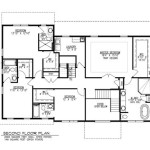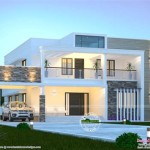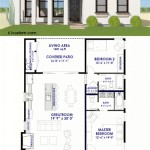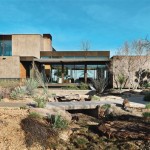Plans For A Large Dog House refer to the detailed instructions, blueprints, or sketches that guide the construction of a substantial shelter designed specifically to accommodate the needs of large dog breeds.
Large dog houses serve as crucial outdoor havens for these sizable companions, providing protection from inclement weather, extreme temperatures, and potential hazards in the surroundings. They offer a designated space for shelter, comfort, and security, ensuring the well-being and contentment of these beloved pets.
In the subsequent sections of this article, we will delve into the intricacies of designing and constructing a large dog house, exploring various plans that cater to specific requirements, preferences, and climatic conditions. We will discuss key considerations such as size, materials, insulation, ventilation, and functionality, empowering you with the knowledge and guidance necessary to create the perfect outdoor retreat for your furry friend.
When planning a large dog house, consider these key points:
- Appropriate Size
- Durable Materials
- Proper Insulation
- Adequate Ventilation
- Elevated Floor
- Sloped Roof
- Weatherproofing
- Easy Maintenance
- Aesthetic Appeal
- Local Regulations
Adhering to these guidelines ensures a comfortable, safe, and functional outdoor haven for your large canine companion.
Appropriate Size
Determining the appropriate size for a large dog house is crucial to ensure the comfort and well-being of your canine companion. The house should provide ample space for the dog to move around, stand up, and stretch out comfortably, while also being compact enough to retain warmth and provide a sense of security.
To calculate the ideal size, measure your dog’s height from the top of their head to the ground, and their length from the tip of their nose to the base of their tail. Add 6 to 8 inches to both measurements to allow for comfortable movement and stretching room.
For example, if your dog is 28 inches tall and 40 inches long, the minimum recommended size for their dog house would be 34 inches tall and 48 inches long. However, it’s generally advisable to opt for a slightly larger size to accommodate growth and ensure maximum comfort, especially if your dog is still a puppy.
Keep in mind that the size of the dog house should also be proportionate to the climate in your area. In colder regions, a larger dog house with thicker insulation is necessary to retain heat and protect your dog from the elements. Conversely, in warmer climates, a smaller dog house with adequate ventilation is sufficient to provide shelter from the sun and rain.
Durable Materials
When selecting materials for a large dog house, durability is paramount. The materials should be able to withstand the elements, resist wear and tear from your dog’s activities, and provide adequate insulation. Here are some recommended materials:
1. Pressure-Treated Wood: This type of wood is treated with chemicals that make it resistant to rot, decay, and insects, making it an excellent choice for outdoor structures. It is also relatively affordable and easy to work with.
2. Cedar: Cedar is a naturally rot-resistant wood that is also known for its insulating properties. It is a more expensive option than pressure-treated wood, but it is also more durable and aesthetically pleasing.
3. Redwood: Redwood is another naturally rot-resistant wood that is known for its strength and durability. It is a good choice for areas with extreme weather conditions, but it can be more expensive than other options.
4. Vinyl: Vinyl is a durable and weather-resistant material that is easy to clean and maintain. It is also available in a variety of colors and styles, making it a good choice for those who want a dog house that matches their home’s exterior.
5. Metal: Metal dog houses are very durable and weather-resistant, but they can be more expensive than other options. They are also not as well-insulated, so they may not be the best choice for areas with extreme temperatures.
When choosing materials for your large dog house, consider the climate in your area, your dog’s size and activity level, and your budget. By selecting durable materials, you can ensure that your dog’s house will provide years of comfort and protection.
Proper Insulation
Insulation is crucial for maintaining a comfortable temperature inside your dog house, especially during extreme weather conditions. Proper insulation will help keep your dog warm in the winter and cool in the summer, reducing the risk of hypothermia or heatstroke.
There are a variety of insulation materials available, but the most common and effective for dog houses are:
- Foam insulation: Foam insulation is a lightweight and inexpensive material that provides excellent insulation. It is available in sheets or rolls, and can be easily cut to fit the walls and roof of your dog house.
- Fiberglass insulation: Fiberglass insulation is another effective and affordable option. It is made from tiny glass fibers that are bonded together with a resin. Fiberglass insulation is available in batts or rolls, and can be cut to fit the walls and roof of your dog house.
- Straw insulation: Straw insulation is a natural and eco-friendly option that provides good insulation. It is made from dried straw that is packed into the walls and roof of your dog house. Straw insulation is relatively inexpensive, but it can be more difficult to install than foam or fiberglass insulation.
When choosing insulation for your dog house, consider the climate in your area, the size of your dog, and your budget. By selecting the right insulation, you can ensure that your dog’s house will be a comfortable and safe haven, no matter the weather.
In addition to the insulation material, the thickness of the insulation is also important. The thicker the insulation, the better it will insulate your dog house. For most climates, a thickness of 2 to 4 inches is sufficient. However, if you live in a very cold climate, you may want to consider using a thicker insulation, such as 6 to 8 inches.
Properly insulating your dog house is an essential step in ensuring the comfort and well-being of your furry friend. By following these tips, you can create a warm and inviting space for your dog to enjoy for years to come.
Adequate Ventilation
Adequate ventilation is essential for maintaining a healthy and comfortable environment inside your dog house. Proper ventilation will help to reduce moisture and humidity, which can lead to mold and mildew growth. It will also help to circulate fresh air and prevent your dog from overheating in the summer.
- Provide multiple ventilation openings: Your dog house should have at least two ventilation openings, one near the top of the house and one near the bottom. This will allow air to circulate freely and help to prevent moisture from building up.
- Make sure the ventilation openings are large enough: The ventilation openings should be large enough to allow for adequate airflow. A good rule of thumb is to make the ventilation openings at least 2 inches wide by 4 inches tall.
- Position the ventilation openings strategically: The ventilation openings should be positioned so that they are not blocked by bedding or other objects. They should also be placed away from the door of the dog house to prevent drafts.
- Avoid using materials that block airflow: When choosing materials for your dog house, avoid using materials that block airflow, such as plastic or metal. Instead, opt for materials that allow air to circulate freely, such as wood or mesh.
By following these tips, you can ensure that your dog house has adequate ventilation. This will help to keep your dog comfortable and healthy, and it will also help to prevent mold and mildew growth.
Elevated Floor
An elevated floor is an important feature for any large dog house, as it provides several benefits for your canine companion. Here are the key details and advantages of an elevated floor:
Protection from Moisture and Cold: An elevated floor raises the dog house off the ground, which helps to protect your dog from moisture and cold. This is especially important in areas with high humidity or rainfall, as it prevents water from seeping into the house and making it damp and uncomfortable. Additionally, an elevated floor helps to insulate the house, keeping your dog warm in the winter months.
Improved Airflow and Ventilation: An elevated floor allows for better airflow and ventilation beneath the dog house. This helps to reduce moisture and humidity, which can lead to mold and mildew growth. Improved airflow also helps to regulate the temperature inside the house, keeping your dog cool in the summer and warm in the winter.
Reduced Risk of Pests and Parasites: An elevated floor helps to reduce the risk of pests and parasites, such as fleas, ticks, and mites, from entering the dog house. These pests can cause discomfort and health problems for your dog, so it is important to take steps to prevent them from infesting the house.
Easier Cleaning and Maintenance: An elevated floor makes it easier to clean and maintain the dog house. You can simply sweep or hose down the area beneath the house to remove dirt and debris. This helps to keep the house clean and sanitary for your dog.
When building an elevated floor for your dog house, be sure to use sturdy materials that can support the weight of your dog and any bedding or other items you may place inside the house. You should also make sure that the floor is raised high enough off the ground to prevent moisture and cold from entering the house.
An elevated floor is a valuable addition to any large dog house, as it provides numerous benefits for your dog’s comfort, health, and well-being.
Sloped Roof
A sloped roof is an important feature of a large dog house, as it provides several benefits for your canine companion. Here are the key details and advantages of a sloped roof:
- Improved Drainage: A sloped roof allows water to drain off easily, preventing it from pooling on the roof and causing leaks or damage to the house. This is especially important in areas with heavy rainfall or snowfall.
- Reduced Snow Accumulation: A sloped roof helps to prevent snow from accumulating on the roof, which can put stress on the structure of the house and make it more difficult for your dog to enter and exit the house.
- Better Ventilation: A sloped roof allows for better ventilation and airflow in the dog house, which helps to regulate the temperature inside the house and prevent moisture and humidity from building up.
- Aesthetic Appeal: A sloped roof can enhance the overall appearance of your dog house, making it more visually appealing and complementary to your outdoor dcor.
When building a sloped roof for your dog house, be sure to use sturdy materials that can withstand the elements and support the weight of snow and ice. You should also make sure that the roof is sloped at an angle that is sufficient to allow for proper drainage and prevent water from pooling.
A sloped roof is a valuable addition to any large dog house, as it provides numerous benefits for your dog’s comfort, health, and well-being.
Weatherproofing
Weatherproofing is crucial for ensuring that your large dog house can withstand the elements and provide a comfortable and safe haven for your furry friend. Here are some key points to consider when weatherproofing your dog house:
- Roofing Material: The roofing material you choose should be waterproof and durable. Asphalt shingles, metal roofing, and rubber roofing are all good options. Make sure that the roof is properly sealed to prevent leaks.
- Walls and Siding: The walls and siding of your dog house should be made of weather-resistant materials, such as pressure-treated wood, vinyl, or metal. Make sure that the seams and joints are properly sealed to prevent water from seeping in.
- Insulation: Insulation is important for keeping your dog warm in the winter and cool in the summer. Make sure that the insulation is properly installed and that there are no gaps or holes that could allow air or moisture to enter.
- Ventilation: Ventilation is important for preventing moisture from building up inside the dog house. Make sure that there are vents in the roof and walls of the house to allow for air circulation.
By following these tips, you can weatherproof your large dog house and ensure that it provides a comfortable and safe haven for your furry friend, no matter the weather.
Easy Maintenance
When designing and constructing a large dog house, it is essential to consider ease of maintenance to ensure that the structure remains a comfortable and healthy environment for your canine companion. Here are some key points to consider:
1. Choose Durable and Weather-Resistant Materials: Opt for materials that are resistant to rot, decay, and insect damage. Pressure-treated wood, vinyl, and metal are all good choices. These materials will withstand the elements and require minimal maintenance over time.
2. Provide Easy Access for Cleaning: Incorporate a removable roof or hinged door to allow for easy access to the interior of the dog house. This will make it easier to sweep or vacuum the floor, remove bedding, and clean any spills or accidents.
3. Use Removable or Washable Bedding: Choose bedding materials that can be easily removed and washed, such as waterproof fabrics or machine-washable blankets. This will help to keep the sleeping area clean and hygienic for your dog.
4. Consider a Non-Slip Floor: A non-slip floor will help to prevent your dog from slipping and sliding inside the house, especially if the floor gets wet. You can use a rubber mat or paint the floor with a non-slip coating.
By following these tips, you can create a large dog house that is easy to maintain and keep clean, ensuring a comfortable and healthy living space for your furry friend.
Aesthetic Appeal
The aesthetic appeal of a large dog house is an important consideration for many dog owners. After all, the dog house will be a part of your outdoor space, and you want it to complement your home and yard. Here are some tips for creating an aesthetically pleasing dog house:
1. Choose a Style that Complements Your Home: The style of your dog house should complement the style of your home. If you have a traditional home, a classic dog house with a pitched roof and white trim would be a good choice. If you have a modern home, a more contemporary dog house with a flat roof and clean lines would be a better fit.
2. Consider the Size and Scale of Your Dog House: The size and scale of your dog house should be in proportion to the size of your dog and your yard. A large dog house in a small yard will look out of place, and a small dog house in a large yard will look lost. Choose a dog house that is large enough for your dog to comfortably stand up and turn around in, but not so large that it overwhelms your yard.
3. Pay Attention to the Details: The details of your dog house can make a big difference in its overall appearance. Choose hardware that complements the style of the house, and add personal touches, such as a painted paw print or a carved nameplate.
4. Make it Comfortable for Your Dog: The most important thing is that your dog house is comfortable for your dog. Make sure that it is well-insulated and has a comfortable bed. You may also want to add a few personal touches, such as your dog’s favorite toys or a blanket with your scent on it.
By following these tips, you can create a large dog house that is both aesthetically pleasing and comfortable for your furry friend.
Local Regulations
Before constructing a large dog house, it is important to check with your local authorities to determine if there are any regulations or restrictions that apply. Some municipalities have zoning laws that limit the size, height, and placement of dog houses. Others may have specific requirements for the materials used in construction or the need for a building permit.
To ensure compliance, contact your local zoning department or building inspector’s office. They can provide you with information about any applicable regulations and guide you through the necessary steps to obtain a building permit if required. Failure to comply with local regulations can result in fines or even the removal of your dog house.
In addition to zoning laws, some homeowners associations (HOAs) may have their own rules and regulations regarding dog houses. These rules may vary from community to community, so it is important to check with your HOA before starting construction. Some HOAs may have restrictions on the size, appearance, or location of dog houses. Others may require that dog houses be screened from view or placed in a specific area of the yard.
By checking with your local authorities and HOA (if applicable), you can ensure that your large dog house meets all applicable regulations and requirements. This will help to avoid any potential issues or conflicts with your neighbors or the community.
Here are some additional tips for complying with local regulations:
- Choose a location for your dog house that is not too close to your neighbor’s property or any public areas.
- Make sure that your dog house is securely anchored to the ground to prevent it from being overturned by strong winds.
- Keep your dog house clean and well-maintained to avoid attracting pests or creating a nuisance.
By following these tips, you can ensure that your large dog house is a safe, comfortable, and compliant addition to your property.










Related Posts








